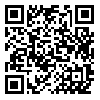Volume 4, Issue 1 (5-2012)
IJDO 2012, 4(1): 32-39 |
Back to browse issues page
Division of Pharmacology, AU College of Pharmaceutical Sciences, Andhra University, Visakhapatnam, India
Abstract: (12936 Views)
Type 2 diabetes is one of the major public health challenges in 21st century. Both environmental changes and genetics are attributed for increased risk of type 2 diabetes. Obesity is the most critical and modifiable risk factor and should be targeted for successful management of diabetes. This review article discusses three main approaches to manage obesity. Three management modalities considered are lifestyle modifications including dietary counseling, behavior therapy and physical activity/exercise, use of pharmaceutical agents, and bariatric surgery. In most patients, lifestyle interventions produce only modest weight loss and have a diminishing effect over time. If patients are unable to respond lifestyle intervention with a weight loss of 5-10%, adjunctive pharmacological treatment may be considered. A variety of pharmacological agents have been shown to induce weight loss and preserve weight loss for longer, as well as ameliorate cardiovascular risk factors. However, the long term health benefits and safety remain unclear and thus, long term studies powered to examine mortality and cardiovascular morbidity are required. Bariatric surgery is the ultimate treatment producing massive weight loss and resolution of type 2 diabetes in nearly 100% of patients. However this is applicable only for patients with significant obesity.
Successful treatment of most overweight and obese individuals will depend upon the future development of new therapies. It also requires a paradigm shift in viewing obesity as a disease that requires treatment, rather than deferring treatment until the complications develop.
| Rights and permissions | |
 |
This work is licensed under a Creative Commons Attribution-NonCommercial 4.0 International License. |


